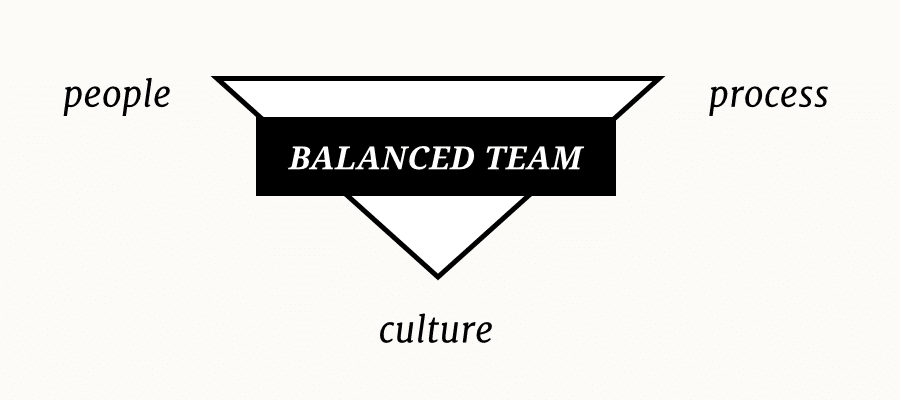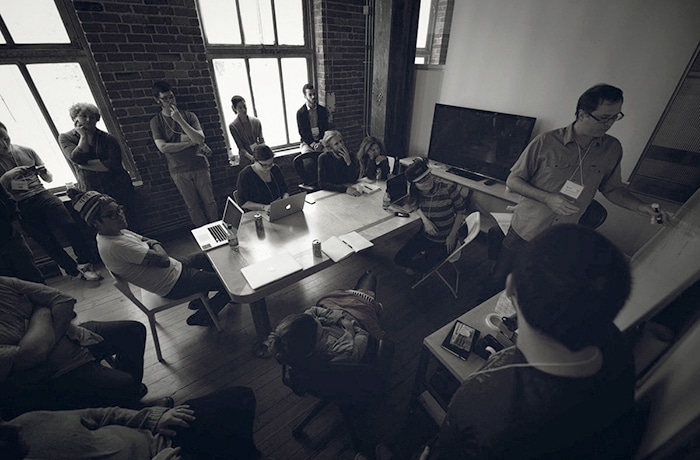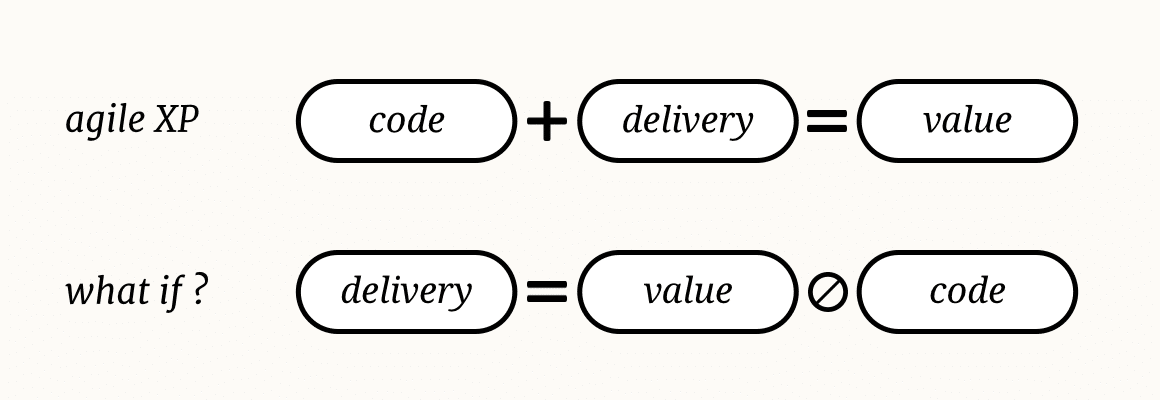I wanted to take a moment to reflect back on two events that left me creatively inspired this year. When I attended the 99u and Balanced Team conferences, amongst other makers and lean/agile enthusiasts, it was clear I was surrounded by the right people. There were many takeaways from these inspiring groups, and below are four that I’d like to share.
“A master must know how to become a student again.”
– Joshua Davis, @codeandtheory, #99conf
 “Always be a student.” This short-form phrase has passed through my mind several times this year. Learning is something we should always be doing professionally and introspectively, and fleeting desires of success might get in the way of that. As Davis said, “success is self-defined and can really f#@$ up creativity.”
“Always be a student.” This short-form phrase has passed through my mind several times this year. Learning is something we should always be doing professionally and introspectively, and fleeting desires of success might get in the way of that. As Davis said, “success is self-defined and can really f#@$ up creativity.”
A lot of fear exists with this mentality because it implies you are exposing what you feel as a weakness and an area you wish to self-improve. I think there is a lot of power and strength in that. “Fear is where the greatest thinking occurs, and creativity does come if success exists or not.” I enjoy the vulnerability of the first statement, and I believe that it’s out of our fear that we surprise ourselves most. And without exposing ourselves to fear, we will not become greater at our craft.
“Act your way into a new way of thinking.”
– A.J. Jacobs, @ajjacobs, #99conf
 When you are young and in a competitive career, you need to possess certain communication skills when interacting with colleagues, clients, and users. Jacobs extended this thought with his own experiments, and believed that if you acted the part for long enough you will learn how to exercise those desired behaviors naturally. He said that we must “do deep work to focus persistently on a cognitively demanding and valuable task.” He presents the idea that understanding “the act of focusing” will help you achieve your goal and produce the outcome or artifact you are looking for.
When you are young and in a competitive career, you need to possess certain communication skills when interacting with colleagues, clients, and users. Jacobs extended this thought with his own experiments, and believed that if you acted the part for long enough you will learn how to exercise those desired behaviors naturally. He said that we must “do deep work to focus persistently on a cognitively demanding and valuable task.” He presents the idea that understanding “the act of focusing” will help you achieve your goal and produce the outcome or artifact you are looking for.
Being surrounded in a world of distraction, I catalogued that idea as a skill to continue building in myself. I’d imagine it’s much like fulfilling the desire to run a marathon. The runner would need to understand the physical and mental commitment required to achieve their goal. Visualizing your physical self doing this act, and then doing it yourself (even if it feels fake at first), will get you a long way to adopting the changes needed to realistically accomplish your goals.
“Balance is not a verb, it’s a noun.”
– Janet Brunckhorst, @janakin, #balancedteam
 I appreciated the discussions I had at Balanced Team and found that amongst all the enthusiasm and energy boxed into this room, we all come from very different contexts that shape and form our identities today. There are clear points of view and tensions that arise with most of what we encounter in our professional lives.
I appreciated the discussions I had at Balanced Team and found that amongst all the enthusiasm and energy boxed into this room, we all come from very different contexts that shape and form our identities today. There are clear points of view and tensions that arise with most of what we encounter in our professional lives.
“Empathy and trust within teams is absolutely key, along with empowerment and honesty about fears and anxieties related to the project.” Janet talked about how good culture and strong leadership have an impact, in the way that she illustrated in this diagram. Culture holds up people and process and can ultimately fail to provide support for both. Without the support of a strong culture, any idea or process could never happen.
Janet presented a nice metaphor of how she sees balance working. She showed a video of a gymnast performing her routine on a balance beam. To maintain balance and poise, she constantly re-adjusted her body from top to bottom between every move. I found this metaphor interesting when applied to an individual or agile team. Finding more personal balance is not only a contribution we can make to ourselves, our peers, clients and company culture strengthen from it as well.
“What if… value = delivery, ≠ code?”
– Tim McCoy, @seriouslynow, #balancedteam
 I really enjoyed this open space discussion proposed by Tim McCoy from Pivotal Labs. The topic was about using lean practices for discovery activities and agile for delivery. Working at Atomic, this is relevant every day.
I really enjoyed this open space discussion proposed by Tim McCoy from Pivotal Labs. The topic was about using lean practices for discovery activities and agile for delivery. Working at Atomic, this is relevant every day.
This statement spoke to me because I’ve always measured productivity by value delivered. Learning more about XP practices shows me the historical issue. The lean/agile UX community and my peers at Atomic focus on utilizing the whole team, empowering everyone to contribute beyond their core specialties. Code isn’t the only way a developer can contribute value towards a project. As a team, it’s important to converge on various design activities like overall UX strategy, design process, prototyping, and usability testing.
The legacy is that design time is sacrificed before coding. Many people still have this problem today. Incorporating better lean/UX practices within an existing agile framework will lead to more balanced teams. XP process is very ‘pull-based’ where there are no iterations to establish what to design before coding. Tim, like all of us, shares a passion for speaking for the users. UX is now very much engrained in many agile development shops, and as the ratio of designer to developer to tester is growing, we must all embrace our ability to contribute to making the product great for the user.

